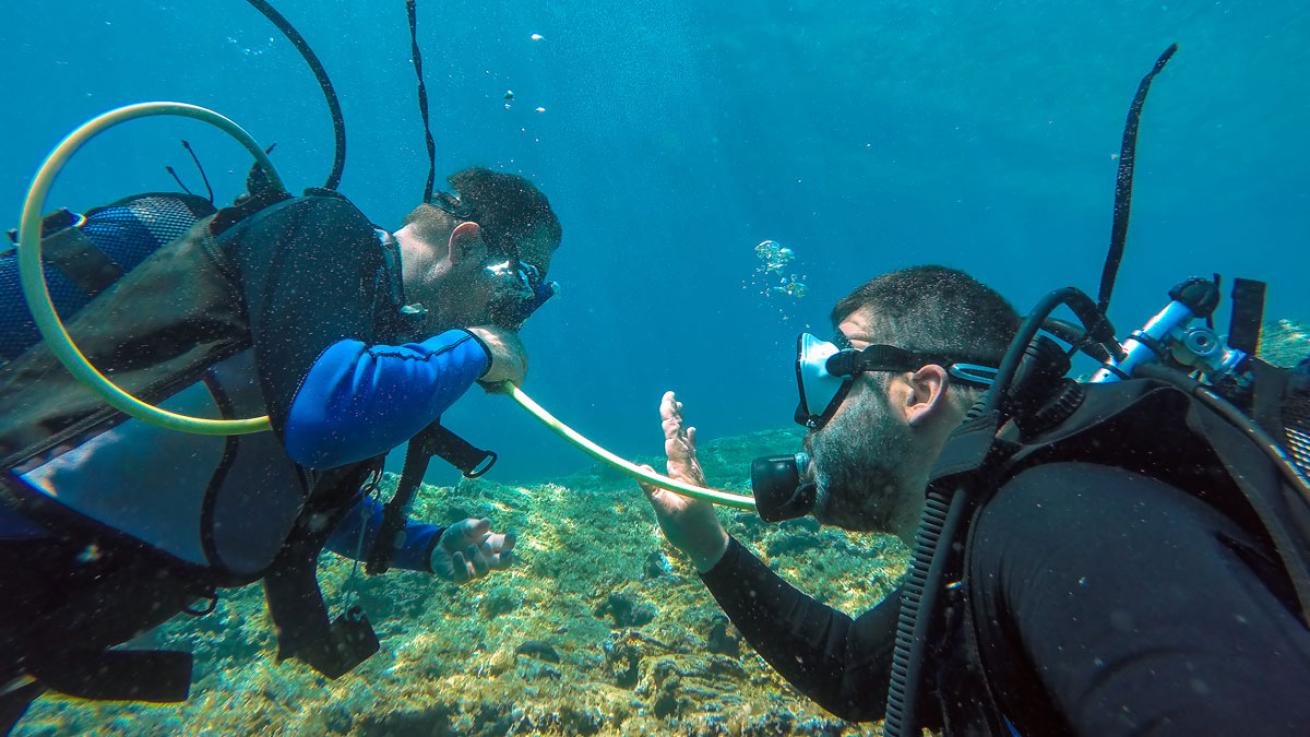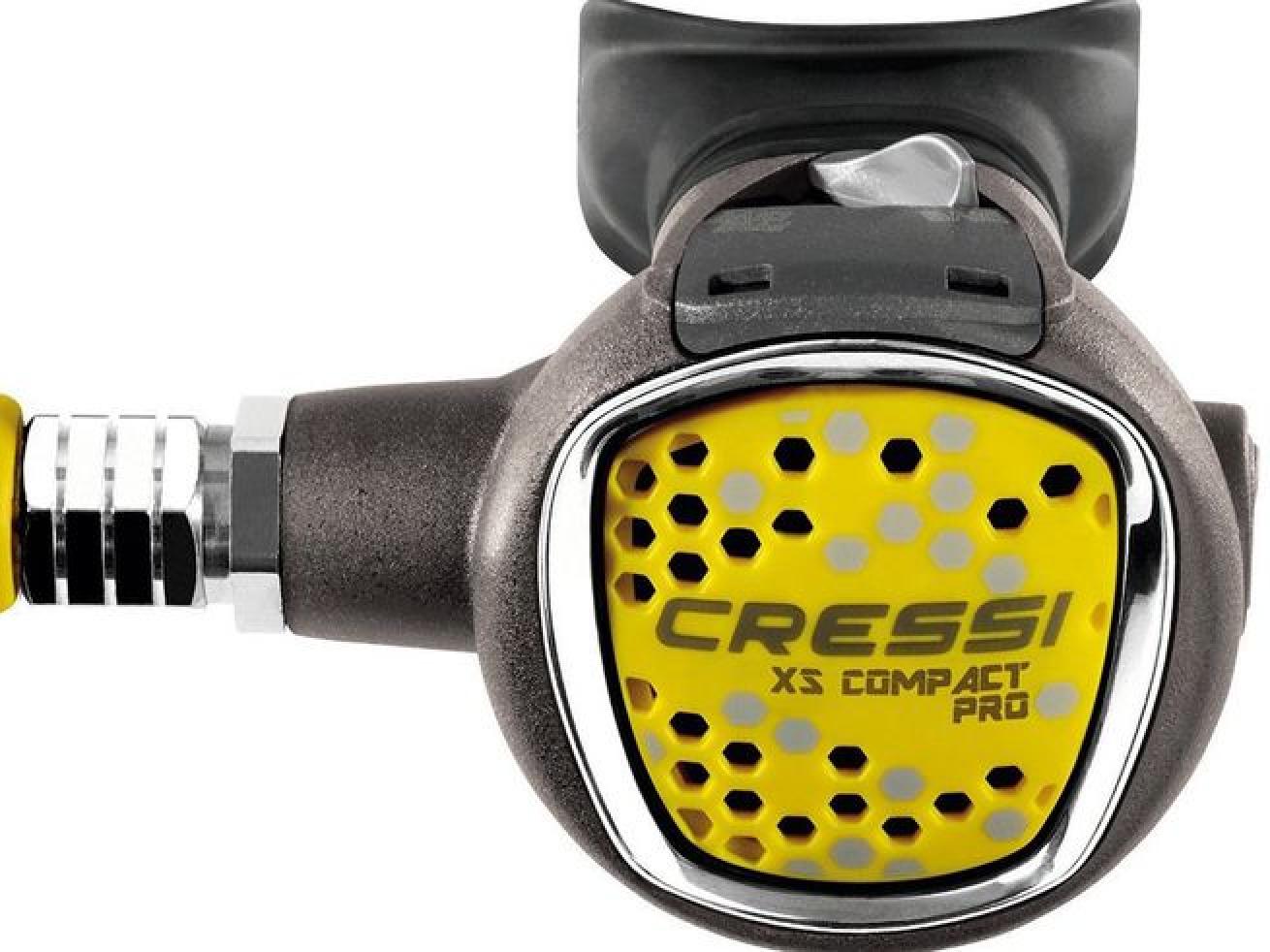What Scuba Divers Need to Know about Alternate Air Sources

ShutterstockYou may never need a backup air source, but in the case of a buddy’s out-of-air emergency or your own malfunctioning primary reg, you’ll be glad you have one.
If you're an active diver, you most likely have an alternate air source that you consider sufficient for your needs. But if you’re just buying your first set of gear, you probably have questions about what type of alternate air source you should get.
First, these are your options:
- An octopus or octo regulator. The octopus is sometimes called a secondary regulator or "safe second." In reality, it can be any regulator second stage intended for use as an octopus.
- An alternate inflation regulator. This device combines the octopus with the power inflator. They can be integrated into one unit on the BC or with the octopus reg as an add-on simply placed in line with the power inflator.
- A redundant air supply. It uses an entirely separate cylinder and regulator. A redundant air supply can be a small, independent unit with an integrated regulator, such as the Spare Air, or a larger pony bottle using a conventional first and second stage regulator.
These are the fundamental aspects you should keep in mind for your alternate air source, its configuration and use:
- It should not leak or free flow when not in use; detuning, user adjustments and keeping the mouthpiece turned down all help with this.
- It should be securely attached so it does not swing free and get damaged by or cause damage to the environment, yet it should detach easily when needed.
- It should be easy to use.
- It should be able to be used in a right-side-up position. In a situation where your dive buddy needs it, it’s critical that it’s been configured for him or her to use easily.
- Ideally, the octo reg has a longer hose than your primary. Using a longer hose permits divers to share air without being so close that their movements are inhibited; plus, you don’t need to remove your second stage in an out-of-air emergency. This is a matter of preference, though. Some divers prefer that their primary reg be used as the “donor” reg.
- Generally, it is best to use an alternate air source and primary reg from the same manufacturer. This is important because the primary first and second stage's intermediate-pressure and low-pressure port sizes, position and intended use vary. It is even more important if you select an alternate inflation regulator because it must match your BC's low-pressure hose and ambient corrugated hose, while still allowing the remote exhaust to work.
- Configure an octo reg in the "Golden Triangle" setup. Originally conceived by Glen Egstrom, a former professor at UCLA and dive physiology researcher, this method of rigging gear has the octo or integrated second in plain view on the front of the diver, in the area between the right and left hip and the diver's mouth, forming the three points of a triangle. Securing it to your BC or harness this way, the backup reg is readily available to both divers in the case of an emergency.
- Buddy breathing from the same second stage is not a good idea. Though it was once taught routinely, buddy breathing is a difficult skill to learn and retain. But experience is sometimes the best teacher. Divers who shared the same reg in real-world emergencies often met with disastrous consequences. With the current training requirement that all divers should carry an alternate air source, there should be no reason for any diver to buddy breathe off the same reg.
Regardless of which type of alternate air source you select, remember that its performance will depend on the ability of the regulator first stage to deliver air, particularly when it is supplying two second stages and a power inflator. The bottom line: Given the type of diving you plan to do, how will it work for you in a worst-case scenario? How much risk are you willing to accept? If you dive solo, under demanding conditions or in overhead environments, the greater your need for a completely independent air source and a high-performance regulator as your alternate air source.

CressiCressi’s Compact Pro Octopus uses the same casing as the Compact Pro primary second-stage model that’s made from special hi-tech polymers — the only difference is the yellow front cover.
If you have an integrated second-stage on your BC, make sure you maintain it the same way as you do your primary second-stage reg. But if you’re shopping for a back-up second-stage reg, revisit tip No. 6 above.
Look for these features:
- Look for second-stage regs that are dedicated octopuses.
- Look for distinctive markings or colors, such as a bright-yellow faceplate so that it is easy to see.
- Make sure it comes equipped with a longer hose (at least 36 inches). Sometimes, the hose will also be bright yellow.
- Look for adjustments that allow you to detune the reg to help prevent free flows.
- If you are left-handed, look for octos that come in either right- or left-hand versions.










